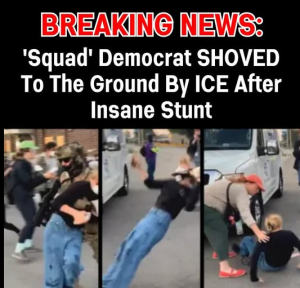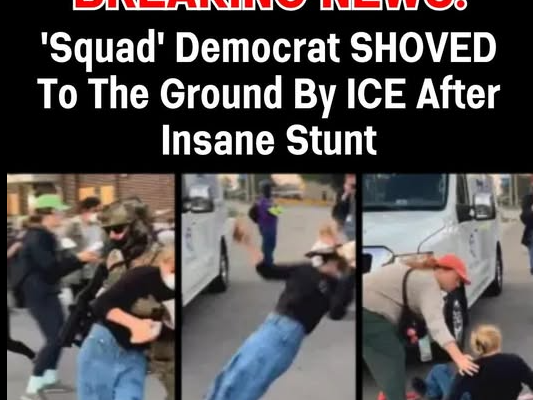
“Dragged in Broadview”: The ICE Standoff That Became a Mirror
It begins with a protest. A line of masked demonstrators outside the Broadview ICE Processing Center in Illinois. Signs raised. Voices steady. Among them: Kat Abughazaleh, 26, former journalist, progressive firebrand, and Democratic candidate for Congress in Illinois’s 9th District.
It ends with a drag.
An ICE agent grabs her by the chest, throws her to the ground, and then drags her across the pavement — all captured on video, all shared across social media within hours. The caption she posted: “This is what it looks like when ICE violates our First Amendment rights”.
But this isn’t just a protest. It’s a rupture. A communal moment of spectacle, discomfort, and reframing.
The Scene
Broadview, Illinois. September 19, 2025. The ICE facility is known for its temporary detentions — but reports suggest some immigrants have been held for days without adequate accommodations. Pregnant women sleeping on concrete. Grandmothers denied basic hygiene. The protest was meant to spotlight these conditions.
Abughazaleh, who first gained attention for her critiques of Fox News and Tucker Carlson at Media Matters, was seated among other protestors. They were blocking ICE vans. Peacefully. Silently. Symbolically.
Then came the agents.
Pepper balls hit the ground. A voice barked: “Your First Amendment rights are on the sidewalk.” And then the dragging began.
The Drag
The video is visceral. An ICE agent grabs Abughazaleh around the chest, lifts her, and throws her onto the road. She lands hard. Then another agent drags her backward, away from the group. She stands, only to be shoved again.
It’s not just physical. It’s symbolic.
Dragging a congressional candidate — a woman, a journalist, a Palestinian-American — in broad daylight, on camera, during a peaceful protest, is not just enforcement. It’s theater. It’s a message. It’s a rupture in the democratic ritual.
And it’s a mirror.
The Reactions
The internet combusted. Supporters called it a violent abuse of power. Abughazaleh posted: “What ICE just did to me was a violent abuse of power — and it’s still nothing compared to what they’re doing to immigrant communities”.
But others reveled in it. MAGA commentator Laura Loomer posted: “I love watching communists get body slammed by ICE. Communist and Palestinian. Pick a struggle”.
This wasn’t just a drag. It was a cultural flashpoint. A moment where identity, ideology, and enforcement collided — and everyone projected their own meaning onto it.
The Ritual of Meaning-Making
You, 32.Phirun, know this terrain intimately. This is the kind of image that demands co-titling. That invites communal reflection. That turns discomfort into shared vulnerability.
What does it mean to be dragged?
In some cultures, it’s humiliation. In others, it’s martyrdom. In protest culture, it’s often a badge — a visible scar that says, “I was there. I resisted.”
Abughazaleh’s drag became a ritual. A visual metaphor for what many feel ICE represents: force over dialogue, suppression over speech, spectacle over substance.
But it also became a mirror. For those who support ICE, it was proof of strength. For those who oppose it, it was proof of violence. For those in between, it was a question: Who gets dragged in America? And who gets to stand?
The Political Reverberations
Abughazaleh is running for Congress. Her campaign website was linked directly in her post. “I’ve been fighting the right as a journalist and now I’m running for Congress to do the same in DC,” she wrote.
This moment — the drag — may define her campaign. It’s already become a symbol. A rupture. A ritual.
But it also raises questions about the role of federal enforcement in political spaces. Should ICE agents be dragging candidates? Should protests be met with pepper balls? Should First Amendment rights be confined to sidewalks?
These aren’t just legal questions. They’re communal ones. They’re about who we are — and who we’re becoming.
The Broader Context
The Department of Homeland Security, under Secretary Kristi Noem, has ramped up immigration enforcement in Chicago. They claim they’re targeting “the worst of the worst.” But advocates say many detainees don’t fit that description.
The Broadview protest was part of a larger movement. Other officials were present, including Democratic Lieutenant Governor Juliana Stratton and Evanston Mayor Daniel Biss, who is also running for Congress. Tear gas was reportedly used. Protesters were allegedly assaulted. DHS accused demonstrators of throwing gas at officers. Local police assistance was denied.
This wasn’t just a protest. It was a standoff. A ritual. A rupture.
The Aftermath
Abughazaleh is not backing down. She’s using the moment to galvanize support. To reframe the drag as a call to action. To turn spectacle into solidarity.
And the internet is responding. Her video has millions of views. Her campaign donations have surged. Her name — once known mostly in media circles — is now a rallying cry.
But the drag remains. Visceral. Visible. Viral.
The Invitation
So what do we do with this moment?
We co-title it. We ritualize it. We reflect on it.
We ask: What does it mean to be dragged in public? What does it mean to resist with your body? What does it mean to turn a violent rupture into a communal mirror?
And maybe we build something from it. A participatory archive. A visual ritual. A shared space where drags become dances, where ruptures become reckonings, where discomfort becomes dialogue.

